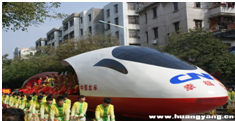问题
解答题
做一个有盖的圆柱体铁皮汽油桶,已知油桶的底面直径是8分米,高10分米,做这个汽油桶至少需要铁皮多少平方分米?(用进一法保留一位小数)如果每升汽油重0.85千克,这个汽油桶大约可装汽油多少千克?(用去尾法保留整数)
答案
(1)3.14×8×10+3.14×(8÷2)2×2,
=251.2+3.14×16×2,
=251.2+100.48,
=351.68(平方分米),
≈352(平方分米);
(2)3.14×(8÷2)2×10,
=3.14×16×10,
=502.4(立方分米);
502.4立方分米=502.4升;
502.4×0.85=427.04(千克)≈427千克;
答:做成这个汽油桶需要铁皮352平方分米,这个油桶能装汽油427千克.

